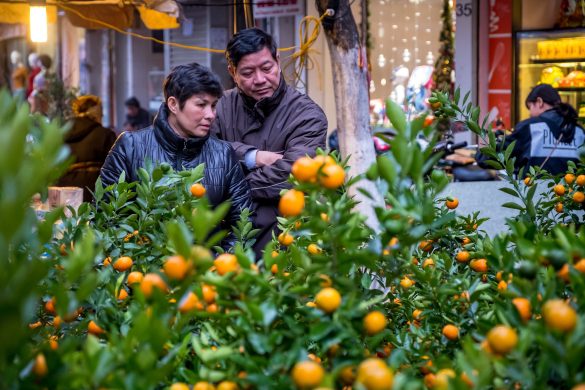Verdens største pengetank for denne klodes fattige skal fyldes op igen. Forhandlere mødes i denne uge i Bruxelles for at lægge sidste hånd på den 16.ende genopfyldning af Verdensbankens særlige penge- og projektkasse – IDA – for de fattigste lande.
I den anledning har Verdensbanken begået en artikel, der trækker linjerne op for, hvordan den store multilaterale bistandsinstitution ser på udsigterne.
* World Bank’s fund for the poorest documents important developing country successes as replenishment talks conclude.
* IDA scores high in independent reviews of effectiveness and transparency.
* Bank and donors eye IDA as integral to achievement of Millennium Development Goals by 2015.
BRUSSELS, 12th December 2010: The sixteenth replenishment (genopfyldning) of the International Development Association (IDA) – the World Bank fund for the poorest – is set to conclude with a fourth and final meeting to be held in Brussels on December 14-15.
The meeting marks the conclusion of a negotiation process that started nine months ago in Paris.
The replenishment negotiations benefitted from constructive feedback from both IDA donors and borrower representatives, and a “genuine search to do better going forward, particularly given the need to make further progress on the Millennium Development Goals (MDGs) by the target date of 2015”, says Axel van Trotsenburg, vice president of the Bank unit that oversees IDA.
– The case for a robust IDA16 replenishment is made on the grounds that low-income countries have been making important headway in lifting people out of poverty, he notes.
Prior to the global economic crisis, several low-income countries experienced an extended period of economic growth that contributed to declines in poverty, with rates falling from over 51 per cent of the population in 1990 to roughly 42 per cent in 2005.
Along with growth and poverty reduction, many countries have seen a decline in infant mortality and greater access to education and services, such as water and sanitation.
More Potential for IDA Going Forward
Since its inception in 1960, IDA has been helping countries reduce poverty and inequality, boost economic growth, and improve living conditions. With financial assistance totaling a stunning 234 billion US dollar, the fund is one of the largest sources of development aid for 79 of the world’s poorest economies, supporting countries across multiple sectors.
IDA has significantly scaled up its interest-free (rentefrie) and grant funding – from 4,4 billion dollar in 2000 to 14,5 billion in 2010.
Beyond financing, IDA countries seek the Bank’s expertise in building public institutions and government capacity in critical areas such as rural infrastructure, education, health care, and transport services.
IDA was the first institution to adopt a Results Measurement System (RMS), which serves as a model for other development banks. The RMS is continuously enhanced with the aim of better tracking IDA’s performance.
Over the past decade, IDA has helped save an estimated 13 million lives; immunized 310 million children; provided access to clean water for 113 million people; helped more than 47 million people access health services; provided nutrition supplements to 99 million children; and educated 13 million girls.
– Assuming current demand patterns continue, a robust IDA replenishment could allow IDA to support the immunization of as many as 116 million more children, training and recruitment of 1,2 million teachers, and provide health services to 18 million more people, including 1 million pregnant women, van Trotsenburg says.
A strong replenishment would also enable close to 42 million more people to access better water sources and would spur investments for the construction or rehabilitation of 44.000 km of roads.
IDA Ranks High on Effectiveness
Læs videre på
http://web.worldbank.org/WBSITE/EXTERNAL/NEWS/0,,contentMDK:22788275~pagePK:64257043~piPK:437376~theSitePK:4607,00.html














